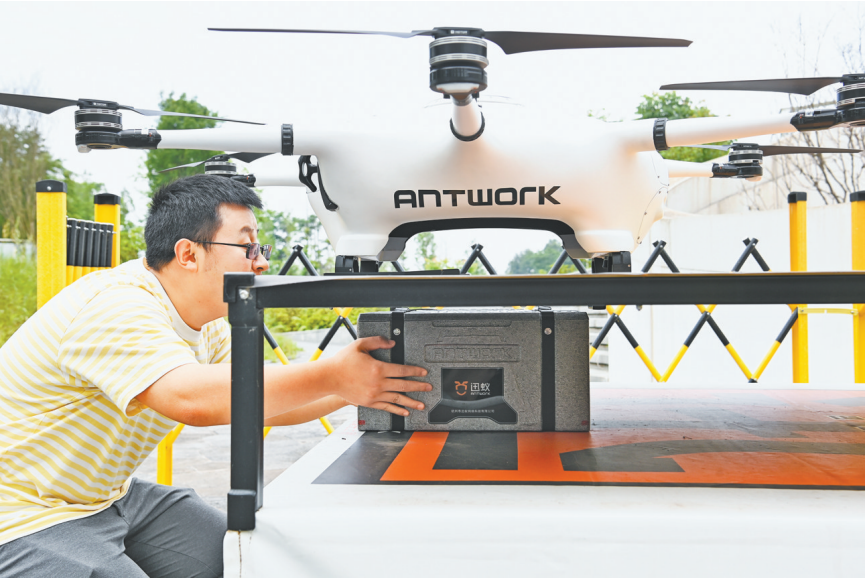Liangjiang Collaborative Innovation Zone explores new low-altitude logistics scenarios for drones
2024-06-13 12:55:27

CHONGQING (CQNEWS) -- Have you ever ordered takeout only to find it delayed due to poor road conditions? With drone delivery, you wouldn't have such worries. It was reported recently that Liangjiang Collaborative Innovation Zone is exploring new scenarios for low-altitude logistics using drones, with drone delivery being one of them.
How do drones transform into "delivery personnel"? A company in the Liangjiang Collaborative Innovation Zone, Chongqing Fly Fast Aviation Technology Co., Ltd. (referred to as Fly Fast Aviation), has a comprehensive solution.
First, it is necessary to design logistics routes for low-altitude delivery. For example, in the Liangjiang Collaborative Innovation Zone, the "drone delivery personnel" can pick up orders from MingYue Dock Cafe and then deliver them to the designated location.
Secondly, the "drone delivery personnel" need to be equipped with delivery devices. A storage box must be installed on the underside of the drone to hold the deliveries. Additionally, specialized landing pads need to be set up at the drone's takeoff and landing points.
Finally, the staff need to remotely monitor from the backend to ensure that this special "delivery personnel" safely carries the cargo and takes off and lands properly.
"Drone logistics delivery mainly consists of the 'two points and one line' principle. 'Two points' refer to the takeoff and landing points for the drone, while 'one line' involves surveying the flight path to ensure a safe and accident-free delivery."
The RA3 drone, which is carrying out the "food delivery" mission this time, can carry a payload of up to 4.5 kilograms and has a flight range of around 15 kilometers. It is equipped with multiple backup power systems, ensuring that even if all power systems fail, the drone can safely land using a parachute.
Overall, drone delivery of food can eliminate the hassle of traffic congestion, but human assistance is still required for tasks such as takeoff, landing, and meal pickup. While this experience is undoubtedly novel, one might wonder if it is a bit exaggerated.
The officials in charge of Fly Fast Aviation have expressed that using drones for food delivery is just one of the new scenarios in low-altitude drone logistics. Taking a different perspective, drones can also transform into "couriers" and utilize the advantages of low-altitude airspace to provide "urgent cross-city delivery" services for everyone to enjoy. (Translated by Liu Xilin, Fathom Language Limited)
Editor:江夷玮

 手机阅读分享话题
手机阅读分享话题